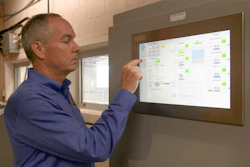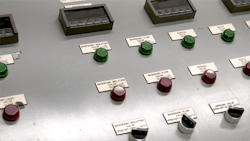City Leverages SCADA for More Data, Better Filtration
The main water treatment plant for the city of Hot Springs, Ark., required upgrades. Numerous equipment improvements were needed before a new automated control system could be put in place. The facility is 50 years old, and time had taken a toll on some of the equipment.
To increase flow rates to meet rising demand, the city needed to upgrade its antiquated filter controls as well as the filters themselves. The filters required structural rehabilitation to address hydraulic problems, and additional instrumentation and controls were needed to reach performance goals. The city enlisted the help of Crist Engineers for structural rehabilitation, and Brown Engineers for control automation.
Brown Engineers, based in Little Rock, Ark., helped the city leverage its Ignition software platform to dramatically improve the automatic backwash process, conserve water, improve water quality and initiate the collection of filter data needed to extend regulatory run-time limits.
Ignition by Inductive Automation is an industrial application platform with tools for building solutions in supervisory control and data acquisition (SCADA), human-machine interface (HMI) and the Industrial Internet of Things (IIoT).
More Tools, More Data
“With the completion of this project, we’ve got tools at our disposal that we’ve never had before,” said Matt Mitchell, facilities operations manager for water production for the city. “With Ignition, it’s compatible with everything else we have in our utility, so we have more information to go on. We have more data to use to make parameter adjustments to optimize our operation.”
“A critical portion of this project had to do with automation of a 31-step backwash process,” said Sam Vandiver, vice president of automation for Brown Engineers. “This used to require an operator monitoring a sea of switches and dials. Now the process begins with just the touch of a button.”
The plant has nine filters controlled by three new filter consoles. Each filter console has a touch screen operator interface, an Ignition gateway and a Bedrock Automation programmable logic controller (PLC).
“The PLCs were programmed using object-oriented structured tags instead of traditional ladder logic,” Vandiver said. “This approach virtually eliminated duplicate code and made the differences and similarities of the filters obvious. This strategy was much more effective and manageable than a copy-paste-edit approach.”
Brown demonstrated a prototype of the application months prior to implementation. The simulation allowed the city to experience the system ahead of time and work with Brown to make adjustments.
“We were all fairly impressed and happy with the way it went,” Mitchell said. “It gave us a certain amount of confidence going into the project that there weren’t going to be a lot of surprises.”
Monty Ledbetter, utility director for the city, said the strong communication between the city, Brown Engineers and Crist Engineers was a key factor. He said it was vital that the engineers understood the city’s processes—and they did.
“There are a lot of sequences involved,” Ledbetter said. “That was one of the challenges to this project—getting all those sequences just right.”
Saving Time & Money
The simulation saved valuable time, which was crucial because the work had to be done during the slow season, before water use increased.
“We were able to meet all three milestones for the project,” said Matt Dunn, vice president of Crist Engineers. “We were able to get all the filters back in service prior to the summer months. I think a big part of that was the teamwork.”
The flexibility of the SCADA software was another factor.
“We wanted to be sure to build on Ignition,” Ledbetter said. “It’s a system we already had in place. We operate our tank levels, all our treatment plants, our wastewater treatment plants, pump stations and sewer lift stations. They’re all operated off of that system, and we wanted to stick with that.”
The price was right, too.
“One of the things that we looked at was cost savings,” Ledbetter said. “Will this project help pay for itself in the future? The answer was yes.”
The city was very pleased with the project, including the innovative, object-oriented approach.
“By working with Brown Engineers, we got exactly what we wanted,” Ledbetter said. “I think we’ve created something that is going to be very beneficial for other utilities to use.”

